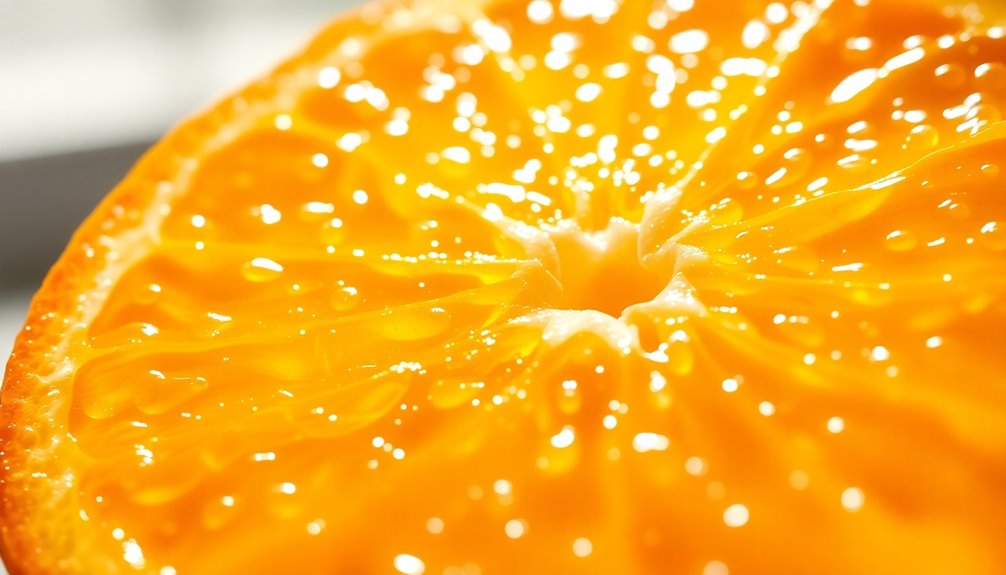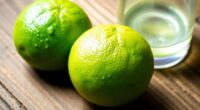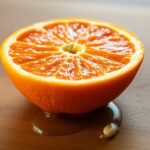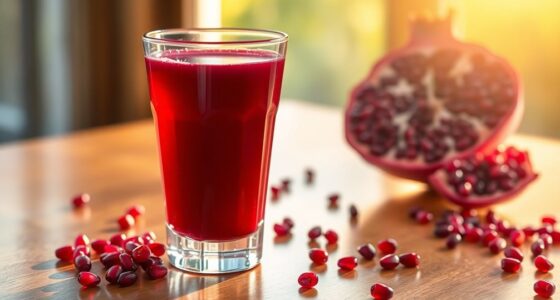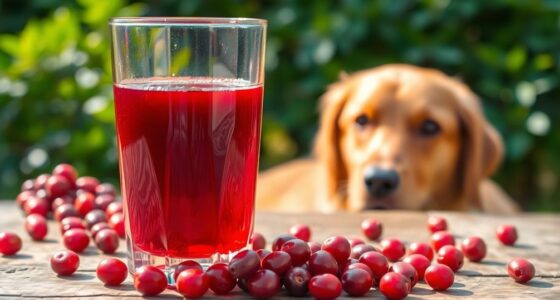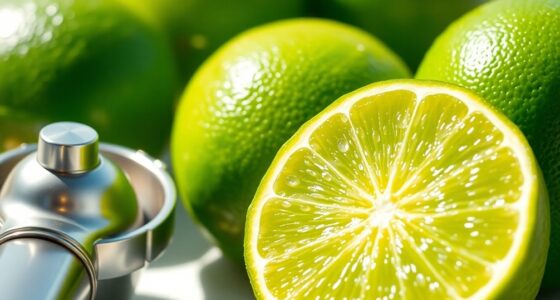A medium-sized orange usually gives you about 4 to 5 tablespoons of juice, which is around 1/4 to 1/3 cup. The exact amount can vary based on the orange's size, variety, and how ripe it is. Valencia oranges are often the top choice for their juicy nature. If you want to maximize your yield, a few simple tricks can help extract even more juice. Stick around to learn how to get the most juice from your oranges!
Key Takeaways
- A medium-sized orange yields about 4 to 5 tablespoons of juice, or roughly 1/4 to 1/3 cup.
- To make 1 cup of orange juice, you need approximately 3 to 4 medium-sized oranges.
- The juiciness of an orange varies by its variety; Valencia oranges are known for their high juice content.
- Ripe oranges typically yield more juice than under-ripe or overripe ones, so selecting the right fruit is crucial.
- Simple techniques like warming and rolling oranges can significantly enhance juice extraction.
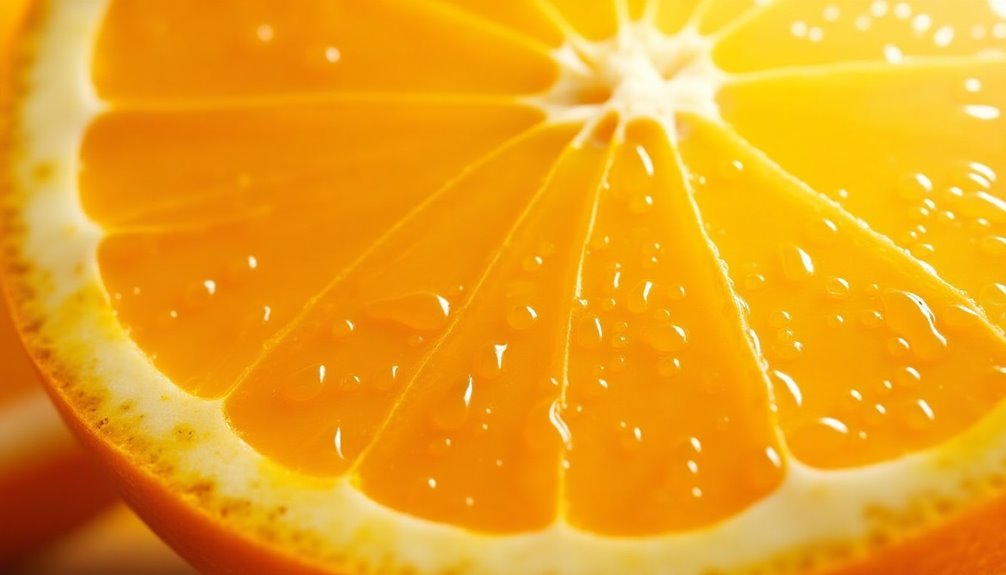
Have you ever wondered just how much juice you can get from an orange? If you've ever squeezed one, you might've noticed that the juice yield varies quite a bit. Typically, a medium-sized orange will give you about 4 to 5 tablespoons of juice. When you convert that to more familiar measurements, you're looking at roughly 1/4 to 1/3 cup of juice. It's pretty impressive when you consider how just one small fruit can pack that much flavor and refreshment.
If you love orange juice and want to know how many oranges you'll need for a full glass, you might be surprised. To produce 1 cup, which is 8 ounces of orange juice, you'll need about 3 to 4 medium-sized oranges. That's right, it's a bit of an investment in citrus! Depending on the size and juiciness of the oranges you choose, you may find that some yield more than others. Varieties like Valencia oranges are often preferred for juicing because they're known for their high juice content. So, the type of orange matters when it comes to maximizing your juice yield.
You might also want to factor in that the juice yield can fluctuate based on how ripe the oranges are. A perfectly ripe orange will generally provide more juice than one that's under-ripe or overripe. If you're looking for the best results, make sure you select oranges that feel heavy for their size; that's a good sign they're full of juice. On the flip side, if they feel light, they mightn't have much juice left to give you.
If you're looking to maximize how much juice you can extract from your oranges, there are a few handy techniques you can try. For instance, warming the oranges in the microwave for about 10-15 seconds can help loosen up the juice inside. Just be careful not to overheat them!
Another technique is rolling the oranges on your countertop before juicing them. This action can break down some of the cell walls and release even more juice.
Now, if you have a pound of oranges, which is generally around 2 medium-sized fruits, you can expect to yield approximately 8 to 10 tablespoons of juice. That's a decent amount, especially if you're making a fresh batch for breakfast or a refreshing drink on a hot day.
Frequently Asked Questions
How Much Juice Do You Get From One Orange?
When you squeeze one medium-sized orange, you can expect to get about 4 to 5 tablespoons of juice, which is around 2 to 3 ounces.
The exact amount can vary depending on the orange's size and ripeness. If you're looking to make a refreshing drink, you might need a couple of oranges to fill a cup.
Freshly squeezed juice offers a delightful, tangy flavor that's hard to beat!
How Many Mls of Juice Are in an Orange?
You're probably wondering just how much juice's packed inside an orange.
Well, on average, you’ll find about 60 to 90 milliliters of juice in a medium-sized orange. If you squeeze a particularly juicy one, you might even get a bit more! The amount of juice can vary based on the variety of the orange and its ripeness. If you’re ever curious about just how much juice in an orange you can extract, experimenting with different types can yield surprising results. Some oranges are specifically bred for juicing, which means they can provide even more liquid than the average fruit.
Depending on the size and ripeness, the yield can vary, but it's always a delightful burst of flavor that makes fresh juice so refreshing.
Enjoy your juicing experience!
How Many Oranges Make 8 Oz of Juice?
To get 8 ounces of juice, you'll need about 4 medium-sized oranges.
Each orange usually gives you around 2 to 3 ounces, depending on its size and ripeness. Riper oranges tend to yield more juice, so pick the best ones when you're shopping.
Keep in mind that the juicer you use can also affect how much juice you extract, so choose one that's efficient for maximum yield.
How Many Oranges Does It Take to Make 12 Ounces of Juice?
You might've just squeezed a few oranges and wondered how many more you need for that refreshing drink.
To make 12 ounces of orange juice, you'll need about 6 to 8 medium-sized oranges. Each one typically gives you 2 to 3 ounces of juice, so if you're after a full glass, grab a few extra.
The juicier and larger the oranges, the better your yield will be! Enjoy your juice!
Conclusion
In each orange, you've got a burst of sunshine waiting to brighten your day. That sweet nectar, rich in flavor and nutrients, reminds us that life's juiciest moments often come in small packages. So next time you peel back that vibrant skin, remember: it's not just about the juice; it's a celebration of nature's gifts. Embrace the zest, savor the sweetness, and let every drop inspire you to squeeze the most out of life!
Cindy thoroughly researches juicing trends, techniques, and recipes to provide readers with practical advice and inspiration. Her writing style is accessible, engaging, and designed to make complex concepts easy to understand. Cindy’s dedication to promoting the advantages of juicing shines through her work, empowering readers to make positive changes in their lives through the simple act of juicing.

